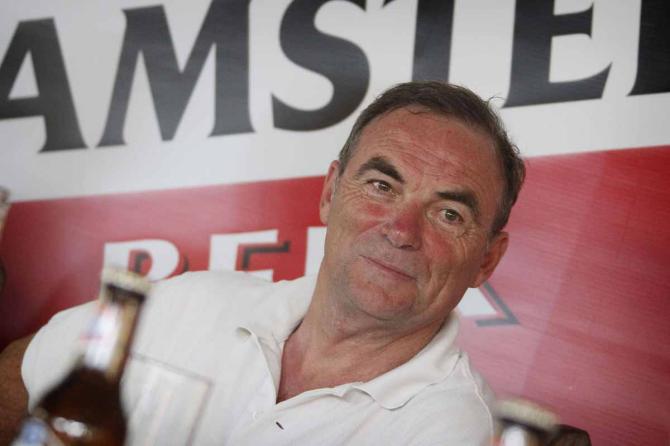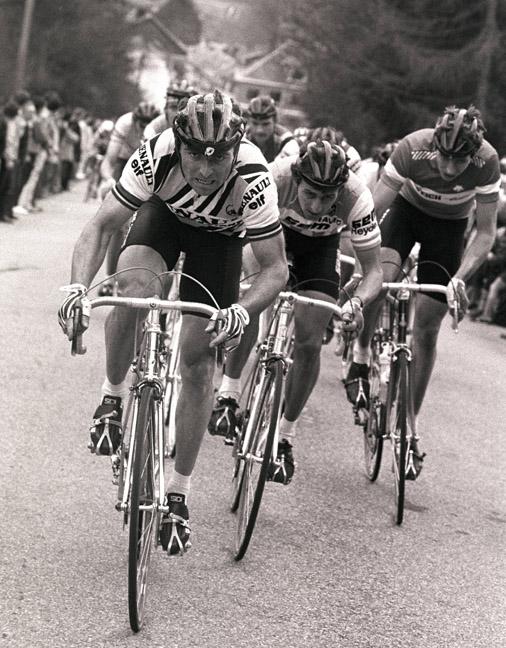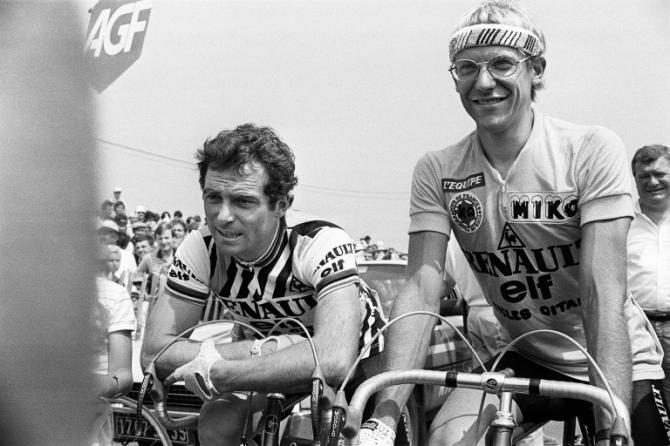Vuelta iconic stages: stage 17, 1983: Bernard Hinault rips the Vuelta apart
The Spanish Armada forms for the first time



Four years after it was close to folding completely because of economic problems, the 1983 Vuelta a España confirmed that cycling's third Grand Tour had - in fact - a secure future and, in sporting terms, it could be every bit as exciting as the Giro d'Italia or Tour de France. The Vuelta's official website claims that "1983 was one of the most spectacular editions in history" and it's honestly hard to disagree.
The rider largely responsible for that was none other than Bernard Hinault who, despite racing injured – which was said to have cost him his participation and bid for a fifth Tour win later on that year - managed to rip the race apart and claim the overall lead for good on stage 17 from Salamanca to Avila. For the first time ever, the Vuelta enjoyed live TV coverage, which only added to the huge impact of a hard-fought victory by a four-times (and later to be five) Tour de France winner in the Spanish race.
Two days earlier, Hinault had shown his teeth with a win in the individual time trial on stage 15 in Valladolid. Spain's Julian Gorospe - who later became one of Miguel Indurain's top domestiques - might have been one of the country's young stars, but he still held onto the top spot overall, losing only ten seconds to Hinault in the race against the clock.
The Gorospe-Hinault duel was very much par for the whole 1983 Vuelta course: the Frenchman was by far the odds-on favourite, but, up until stage 17, he seemed unable to make his natural superiority count when it mattered. Hinault's Renault team was packed with talented, but young and inexperienced, team-mates such as Laurent Fignon and Greg LeMond, whilst the host nation had an abundance of new stars, such as Gorospe, Alberto Fernandez, Pedro Delgado and Marino Lejaretta as their main contenders. For all of the Spaniards, not to mention Italy's Giuseppe Saronni, the opportunity to beat cycling's top stage racer of the time - who was on the backfoot in a Grand Tour for the first time since 1978 - was not one they were prepared to miss.
Two and a half weeks of racing had proved so intense, in fact, that each time Hinault gained time - on stage five, where he took the lead, and on stage 10 where he had attacked with Saronni and Hennie Kuiper in an 'anti-Spanish' mass ambush - the Spaniards would bounce back.
The Spaniards buried their differences to take on Hinault, in a rare alliance. In fact, the 1983 Vuelta was one of the first times that the idea of a Spanish anti-foreign 'Armada' (in less polite terms, a local 'combine') was touted - quietly - as a way of ensuring the race stayed with home riders: it was an idea that proved very costly for Robert Millar in the 1985 Vuelta and lingered right the way through to the 1999 Vuelta when a Spanish Armada was proposed in some sports papers as a good way to oust Jan Ullrich from the gold leader's jersey. Unlike in 1985, in 1999 it didn't work.
The 1983 Vuelta proved so hard to control that when Alvaro Pino and Eduardo Chozas attacked and gained a 15-minute advantage on the Puerto de Pajares on stage 14, nobody was strong enough to stop them. Pino, later to win the Vuelta in 1986, gained a lead on four riders: Hinault, Alberto Fernandez and Marino Lejaretta - were still at two minutes.
The latest race content, interviews, features, reviews and expert buying guides, direct to your inbox!
The stage 15 time trial saw the umpteenth switch of leader as Gorospe moved back into the top spot despite Hinault's victory, which was taken by a mere ten seconds. But two days later, on the four climbs between Segovia and Avila, Hinault - despite suffering from tendonitis - managed to make his decisive, race-conquering move.
The stage between Salamanca and Avila had four climbs - Peña Negra (1st cat), El Pico (3rd), El Seranillos (1st cat.) and La Pasanera (2nd cat.) - and just to make matters even more interesting, rain set in with a vengeance on the higher parts of some climbs in the later part of the day.
As early as Peña Negra, Hinault went repeatedly on the attack, shredding the field, with team-mate Laurent Fignon blasting away on El Pico to keep the pressure high. Then when Hinault went for it late on the same climb, only Lejaretta and Gorospe could follow him.
The next climb, Seranillos, proved too hard for Gorospe, who cracked and left the road open for Hinault to finally claim the race lead for good. Turning his head repeatedly on the lower slopes of the tree-lined climb to check on the gap, Hinault could see Gorospe flailing behind, and he promptly upped the pressure again and again whilst Lejaretta hung on behind for dear life.
By the time the trees cleared towards the summit, Hinault and Lejaretta had picked up the day's early attacker, Kelme's Vicente Belda, and two other breakaways, who all managed to follow the Frenchman and Spaniard as Hinault led the five-man move over the top. Gorospe reached the same point two minutes later guided by team-mate Jose Luis Laguia as the skies darkened, but his time loss was due to increase first on the descent on Seranillos, doubling by the feed zone at its foot, and then mushrooming in the remainder of the stage.
Ahead meanwhile, Hinault ploughed on, with Lejaretta and Belda the only two riders able to cling to his back wheel as they reached the final hot spot sprint at Navalmoral with 30 kilometres to go. Whenever the Spanish TV cameras returned to the trio the images were always the same: Hinault, driving at top speed, and his two fellow breakaways a few metres behind, visibly struggling. On the final descent off the last second category climb of Pasanera, Hinault continually accelerated even on the fastest segments, touching speeds of 100kph at times.
At a packed finish in the Avila velodrome, after six hours in the saddle Hinault easily beat the two other breakaways despite Belda making a last ditch acceleration on the final lap. His right arm punching the sky as he crossed the line four or five bike lengths ahead of the two Spaniards, one of Hinault's greatest victories also enabled him to take a decisive stranglehold on the Vuelta's leader's jersey.
"This was a good step in the right direction, but it's not over till we reach Madrid", Hinault insisted - although the trio's three minute advantage on the next small group of riders (led home by Fignon), the 12 riders who abandoned, not to mention Gorospe losing 20 minutes, all underlined the destruction wreaked by Hinault that day.
But his victory in one of the hardest fought Vueltas in the race's history came at a high price: Hinault's tendonitis was so bad that he could not race the Tour that summer.
Hinault finally won overall with a 1:12 advantage over Marino Lejaretta and 3:58 over Alberto Fernández and having already taken the Vuelta in 1978 - his first big triumph - he never returned to the Spanish Grand Tour. However, he left behind an impressive legacy of deeply memorable riding which gave the Vuelta a much-needed boost to its credibility.
Alasdair Fotheringham has been reporting on cycling since 1991. He has covered every Tour de France since 1992 bar one, as well as numerous other bike races of all shapes and sizes, ranging from the Olympic Games in 2008 to the now sadly defunct Subida a Urkiola hill climb in Spain. As well as working for Cyclingnews, he has also written for The Independent, The Guardian, ProCycling, The Express and Reuters.
